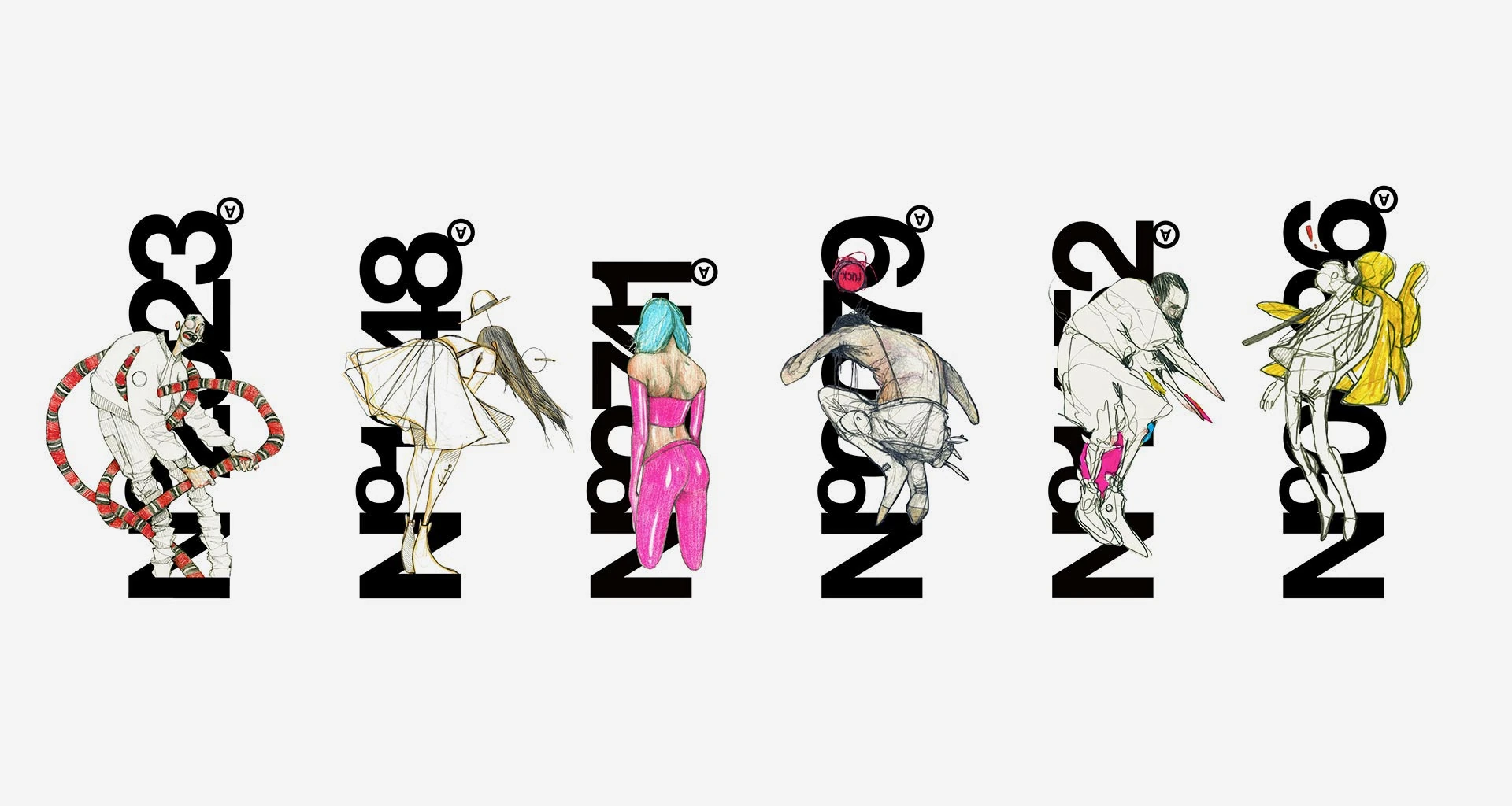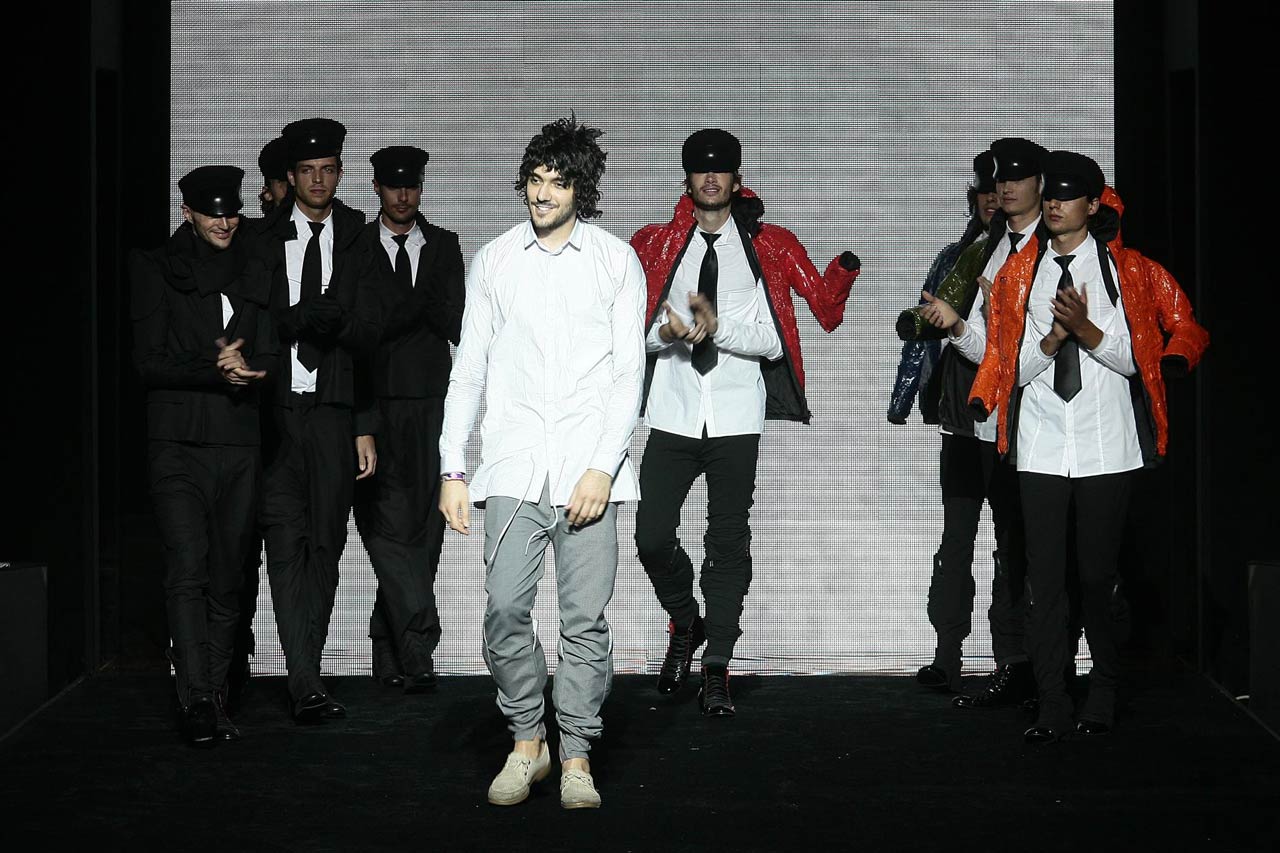
Sketching, the Aitor Throup way.
A chat about drawing as a daily therapy with ITS 2006 winner Aitor Throup.
15 Novembre 2022
“Aitor Throup is an Argentinian-born British artist, designer and creative director.” This is the only sentence that sounds vaguely complete about what Aitor is. All attempts to pin down every aspect of his creativity, of his design philosophy, of what he has done and of how much he has influenced menswear and design methodology throughout his career would inevitably lead towards developing an entire publication in itself. A short bio just doesn’t sound right.

Since the very first time we met him for an interview in 2006 while graduating from Royal College of Art, under the expert teaching of Ike Rust, Aitor was already breaking boundaries with his conceptual and figurative explorations of human anatomy, through deep metaphorical narratives. The notion of anatomy is at the core of his practice, which Throup tends to explore through fantastical aesthetic systems often based on his highly expressive sculptures and figurative drawings – which are showcased through Throup’s long standing daily drawing platform ‘The Daily Sketchbook Archives’.
There’s a reciprocal soft spot that established an unbreakable friendship, since first sniffing each other in that interview room, 16 years ago. And sitting down for a chat with Aitor is no walk on the surface, it’s a mesmerising deep dive. Everything has purpose and demands investigation, and the road leading to the kind of spiritual simplicity he is headed towards nowadays used to be a complicated maze only someone as gifted as him could get out of. Gifted as he is in drawing, sketching turned into a daily therapy allowing his inner child to take the lead, and show the way out. We had the opportunity to articulate on this thought with him.

ITS: What can you see through sketching? In other words, how does sketching influence your creative process?
AT: I believe that every human being is experiencing a continuous process of creation – either consciously or unconsciously, we are all creating our own reality. Once we realise this we can actively utilise our imagination as a creation tool to manifest a desired reality – I use drawing as a sort of interface between my unconscious and my conscious mind… In that sense the process of drawing for me is a sort of act of balancing my left brain with my right brain: there’s an element of control (left brain) but I’m ultimately trying to let my right brain dictate the direction. In this sense it can actually be quite mystical, meaningful and healthy… the sketches become sort of meditations. I also use drawing as a very effective problem solving tool: by visualising ideas from my imagination I’m able to develop, sample, construct and discard or evolve designs in a fraction of the time it would take to reflect those processes physically. I suppose I occasionally also use drawings to illustrate finalised ideas… There are definitely widely different ways in which I use drawing.
ITS: Did you have a teacher who introduced you to drawing, or are you self-taught? Either way, was there a moment in time when you realised “Ok, now I’m able to express myself through drawing”?
AT: I’m completely self taught simply through my constant life-long practice. Drawing is the one thing I have done my whole life – since being a baby… It was a strange thing apparently; but even as a baby I was constantly drawing. I honk I was able to express myself through drawing before I could express myself through conventional language. The thing is I have never tried to draw ‘well’ or ‘realistically’… there has never been an enjoyment in that… I have only drawn out of the pleasure of creating characters and bringing ideas to life so instantaneously on a page. It’s still exciting to me… Simply to breathe life into nothingness.
ITS: What would be your first lesson to someone who doesn’t know how to draw?
AT: I suppose there’s a decision first of all: why do you want to draw? If it’s for illustrative purposes, there are a billion courses / books etc… If it’s for deeper, perhaps more genuinely artistic and/or personal reasons then my advice would be to learn to differentiate between your right brain making decisions and your left brain. You want to put your right brain in charge: be expressive… think about ‘mood’ rather than ‘likeness’ for example… express how you feel.. or how you want to feel. This doesn’t need to look like anything – but it should ‘feel’ like something… then, and only then, bring your left brain into the process to add some structure: perhaps some recognisable factors… a contextual framework to give the drawing some graspable meaning. Ultimately, mastering the art of drawing is about the dance between these two polarities in your mind being expressed simultaneously… the result should be something intrinsically genuine and unique to you – it should be a direct expression of you.
ITS: What’s the best feeling about sketching and how do you feel it is improving you as a human being?
AT: For me it’s like therapy. Or like the gym. It doesn’t always feel great to be honest. But I know it’s always important. A few months ago I reached the ten year anniversary of my daily sketch practice. I think that this discipline has been very important for me – as most disciplines tend to be for most people. There are a lot of times when I simply don’t want to sketch, but the daily practice forces me to do it. I could write so much about the huge insights that I get from this practice but it would get too complicated. In any case it’s a very personal sort of therapy. It’s between you and the drawing… It doesn’t matter whether other people look at the work… the true significance of each piace is only clear to me, if I open myself to it.


